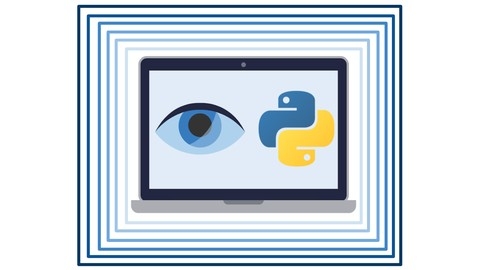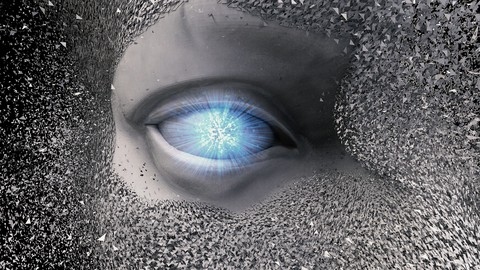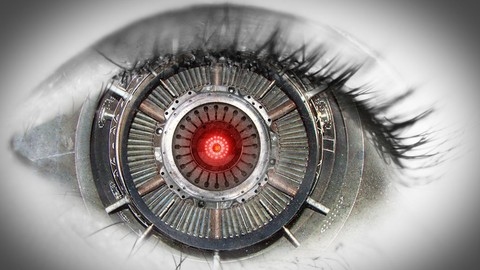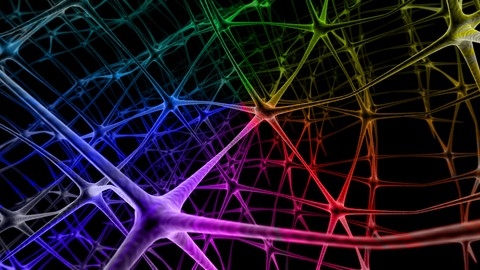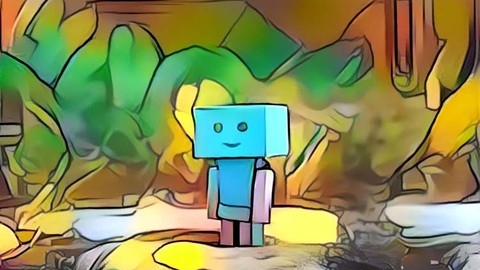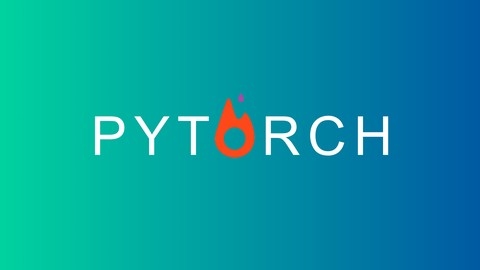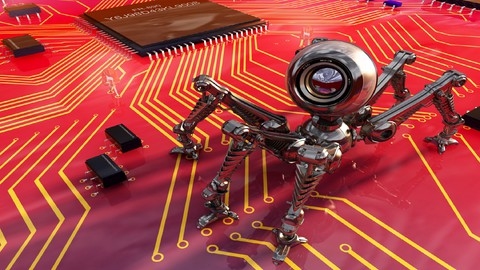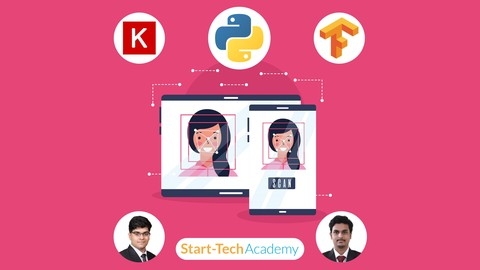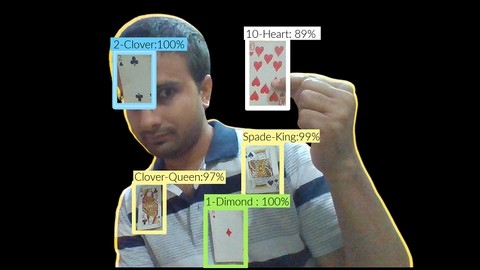Computer vision is a fascinating field that empowers computers to “see” and interpret images and videos just like humans.
This technology is transforming industries, from autonomous vehicles to medical diagnosis and even creative applications like image editing and video analysis.
By learning computer vision, you can gain valuable skills that are applicable to a wide range of careers and projects, whether you’re a developer, researcher, or simply someone who wants to explore the power of AI.
Finding a comprehensive and engaging computer vision course on Udemy can be challenging, with so many options available.
You’re looking for a course that not only covers the theoretical foundations but also provides hands-on experience with real-world applications and datasets.
You want a course that’s taught by experienced instructors and provides clear explanations, practical guidance, and support along the way.
For the best computer vision course overall on Udemy, we recommend “Deep Learning and Computer Vision A-Z + AI & ChatGPT Prizes” by Kirill Eremenko and Hadelin de Ponteves.
This course stands out for its comprehensive approach, covering everything from basic image processing with OpenCV to advanced deep learning techniques for object detection, image classification, and even generative adversarial networks (GANs).
It features a blend of theoretical concepts, practical coding exercises, and engaging projects, making it an ideal choice for both beginners and experienced learners.
This is just the start of our journey through the best computer vision courses on Udemy.
Keep reading to discover more options, tailored to specific areas of computer vision, learning levels, and even career goals.
We’ve got you covered, whether you’re looking for a beginner-friendly introduction to image processing, a deep dive into convolutional neural networks, or a focus on cutting-edge techniques like object detection and facial recognition.
Python for Computer Vision with OpenCV and Deep Learning
The course starts by covering the fundamentals of working with images using NumPy and Jupyter Notebooks.
You’ll learn how to open, display, and draw on images programmatically.
From there, it dives into using the powerful OpenCV library for image processing tasks like blending, thresholding, blurring, and calculating gradients and histograms.
This gives you a solid grounding in core computer vision techniques.
The course then moves into video basics, teaching you how to connect to a camera feed and process video frames.
You’ll learn object detection algorithms like template matching, corner detection, edge detection, and contour finding.
Next up is object tracking, covering optical flow methods as well as algorithms like MeanShift and CamShift.
You’ll get experience with OpenCV’s tracking APIs.
The real highlight is the deep learning section.
It covers machine learning fundamentals, neural networks, backpropagation, and cost functions.
You’ll use Keras to build convolutional neural networks on datasets like MNIST and CIFAR-10.
The course even guides you through training a CNN on your own custom image data.
Finally, you’ll apply everything you’ve learned in a capstone project involving object segmentation and counting.
There’s also a bonus section covering the powerful YOLO object detection algorithm.
Deep Learning and Computer Vision A-Z + AI & ChatGPT Prizes
The course starts with an introduction to face detection using the Viola-Jones algorithm.
You’ll learn about key concepts like Haar-like features, integral images, training classifiers with Adaboost, and cascading.
Then you’ll apply this knowledge to build a face detector using OpenCV.
Next up is object detection intuition, covering the Single Shot Detector (SSD) approach.
You’ll dive into multi-box predictions, handling different scales, and more.
After grasping the theory, you’ll implement an SSD object detector from scratch.
The third module explores Generative Adversarial Networks (GANs) - how they work, their applications, and building a GAN model to generate images.
This cutting-edge technique allows you to create realistic synthetic data.
The course also has annexes covering the fundamentals of artificial neural networks and convolutional neural networks in-depth.
From neurons and activation functions to convolutions, pooling, and backpropagation - you’ll build a solid theoretical foundation.
Throughout the course, you’ll work on hands-on projects like a happiness detector and detecting objects in Monument Valley scenes.
The lectures provide step-by-step guidance, installation tips, and common debugging advice.
You’ll also get access to supplementary resources like PDFs and URLs for further learning.
And if you get stuck, there’s an FAQ/Q&A section to help resolve issues.
Deep Learning: Advanced Computer Vision (GANs, SSD, +More!)
To get started, you’ll learn how to set up your environment with Anaconda, NumPy, SciPy, Matplotlib, Pandas, and other essential libraries.
On the deep learning side, you’ll review the fundamentals of machine learning and neural networks.
Then, you’ll dive into convolutional neural networks (CNNs) and explore architectures like VGG, ResNet, and Inception.
The course goes beyond image classification by covering object detection with techniques like SSD and RetinaNet.
You’ll learn how to detect and localize objects in images and videos using the TensorFlow Object Detection API.
Additionally, you’ll explore neural style transfer, which allows you to apply the artistic style of one image to another.
The curriculum also covers generative adversarial networks (GANs), a powerful generative modeling technique.
You’ll understand the theory behind GANs and implement them in code.
Another highlight is the object localization project, where you’ll build a system to localize objects in images from scratch.
The course provides hands-on coding experience using Python, TensorFlow, Keras, and Google Colab, allowing you to train models on free GPUs or TPUs.
You’ll work with popular datasets like CIFAR-10, MNIST, and a blood cell image dataset.
The course also includes supplementary material on effective learning strategies, coding tips, and FAQs to help you succeed.
Deep Learning: Convolutional Neural Networks in Python
The course starts by reviewing key deep learning concepts like neurons, activation functions, and how models learn.
You’ll code basic neural networks for classification and regression tasks.
The course then dives into convolutional neural networks (CNNs) - the backbone of modern computer vision systems.
You’ll learn what convolution is through visualizations and coding examples on images and text data.
The curriculum covers CNN architectures, implementing them in Python on datasets like CIFAR-10 and Fashion MNIST, and techniques like data augmentation and batch normalization to improve performance.
The later sections provide an in-depth look at convolution’s applications beyond images, like audio processing.
You’ll explore the CNN architecture’s inspiration from the visual cortex.
Practical tips are shared on designing advanced CNN models.
Crucial topics like loss functions (mean squared error, cross-entropy) and optimization algorithms (gradient descent, momentum, Adam) are covered with mathematical insights.
The course also has supplementary sections addressing common student queries - setting up Python environments, coding best practices, and effective learning strategies.
You’ll learn using a mix of theory lectures and hands-on Python notebooks, with ample code walkthroughs.
Access to GPUs/TPUs on Google Colab is provided for faster model training.
Deep Learning Computer Vision� CNN, OpenCV, YOLO, SSD & GANs
This course provides a comprehensive introduction to computer vision and deep learning, covering essential topics like image processing with OpenCV, neural networks, convolutional neural networks (CNNs), and advanced techniques such as object detection (YOLO, SSD), image segmentation (U-Net), and generative adversarial networks (GANs).
It starts with the fundamentals, explaining what computer vision is, the challenges involved, and how deep learning can help overcome them.
You’ll learn about image representation, OpenCV basics, and its limitations.
From there, it dives into neural networks, covering forward propagation, activation functions, backpropagation, and gradient descent – the core concepts behind training deep learning models.
Once you understand the theoretical foundations, you’ll build your first CNN models in Python using Keras.
The course guides you through loading datasets, preprocessing data, building CNN architectures, training models, and evaluating their performance.
You’ll also learn techniques like data augmentation, transfer learning, and visualizing what your CNNs have learned.
The course then explores advanced CNN architectures like VGGNet, ResNet, and InceptionNet, pretrained on the massive ImageNet dataset.
You’ll learn how to leverage these powerful models for your own applications through transfer learning and fine-tuning.
Object detection is a major focus, covering techniques from traditional sliding window approaches to modern deep learning methods like YOLO, SSD, and Faster R-CNN.
You’ll use the TensorFlow Object Detection API and Darkflow to train custom object detectors.
Other highlights include image segmentation with U-Net (useful for medical imaging), facial analysis (emotion, age, gender recognition), generative models like DeepDream and style transfer, and an introduction to generative adversarial networks (GANs) for tasks like simulating aging faces.
The course also covers practical aspects like setting up deep learning environments (virtual machines, cloud GPUs), finding datasets, attending conferences, and exploring alternative frameworks like PyTorch and MXNet.
You’ll even build a computer vision API and web app using Flask and deploy it on AWS.
PyTorch for Deep Learning and Computer Vision
You’ll start with the fundamentals of tensors and linear regression in PyTorch.
Then, you’ll dive into perceptrons and deep neural networks, exploring non-linear boundaries and backpropagation.
The course dedicates sections to image recognition tasks like classifying the MNIST dataset and the more challenging CIFAR-10 dataset.
You’ll learn about convolutional neural networks, a key architecture for computer vision tasks.
The syllabus covers important concepts like convolution layers, pooling, and data augmentation techniques.
One highlight is the transfer learning section, where you’ll work with pre-trained models like AlexNet and VGG16 on a new dataset.
This is a powerful technique to leverage existing knowledge.
The course also covers an intriguing topic - neural style transfer.
You’ll learn how to combine the content of one image with the artistic style of another using deep learning techniques like the Gram matrix.
Throughout, you’ll implement models in PyTorch, a popular deep learning library.
The syllabus includes links to source codes for various models covered.
If you need a refresher, there are optional appendices covering Python, NumPy, and the softmax function.
Modern Computer Vision GPT, PyTorch, Keras, OpenCV4 in 2024!
This comprehensive syllabus covers a wide range of topics, from the fundamentals of computer vision to advanced techniques like generative adversarial networks (GANs) and vision transformers (ViTs).
The course starts with an introduction to computer vision, explaining what makes it challenging and the nature of images.
You’ll then set up your development environment using Colab and dive into OpenCV, a powerful library for image processing.
The syllabus covers essential operations like grayscaling, color spaces, drawing, transformations, and image filtering.
As you progress, you’ll explore more advanced topics in OpenCV, such as image segmentation, contour detection, and object tracking.
The course also covers techniques like face and eye detection using Haar cascade classifiers, as well as facial landmark detection and face swapping with Dlib.
One of the highlights is the integration of cutting-edge technologies like ChatGPT4 and DINO-GPT4V, which revolutionize computer vision applications.
You’ll learn how to leverage these powerful models for tasks like image comparison and object detection.
The syllabus dives deep into deep learning for computer vision, covering convolutional neural networks (CNNs) in both PyTorch and Keras.
You’ll learn about architectures like LeNet, AlexNet, VGGNets, ResNets, and EfficientNets, as well as techniques like transfer learning, fine-tuning, and visualizing what CNNs learn.
Additionally, the course explores advanced topics like autoencoders, GANs, Siamese networks, face recognition, object detection (including YOLO, EfficientDet, and Detectron2), segmentation (U-Net, SegNet, DeepLabV3, and Mask R-CNN), and the Segment Anything Model (SAM).
You’ll also learn about body pose estimation, tracking with DeepSORT, and even creating deepfakes.
The syllabus covers emerging areas like vision transformers (ViTs), depth estimation, image similarity using metric learning, image captioning, video classification, point cloud classification and segmentation, neural radiance fields (NeRFs), 3D vision, and LIDAR technology.
Practical projects are included, such as X-ray pneumonia prediction, 3D CT scan classification, low-light image enhancement, OCR captcha cracking, and deploying computer vision models on various platforms like the cloud, GPUs, embedded devices, and mobile devices.
Convolutional Neural Networks in Python: CNN Computer Vision
You’ll start by setting up your Python environment with Anaconda and Jupyter Notebook, ensuring you have the right tools.
The course then dives into Python basics like arithmetic operations, strings, lists, and tuples, ensuring you have a solid foundation.
You’ll also learn to work with essential libraries like NumPy, Pandas, and Seaborn.
Next, you’ll explore the building blocks of neural networks: perceptrons and sigmoid neurons.
You’ll understand key concepts like activation functions, gradient descent, and backpropagation as you build your first neural network models in Python using Keras and TensorFlow.
The course then guides you through solving classification and regression problems using artificial neural networks (ANNs).
You’ll learn data preprocessing techniques like normalization and train-test splitting.
Additionally, you’ll master building, compiling, training, and evaluating ANN models using Keras.
As you progress, you’ll dive into complex ANN architectures using Keras’ Functional API.
You’ll also learn to save and restore models, and tune hyperparameters for optimal performance.
The course then shifts focus to CNNs, covering essential concepts like stride, padding, filters, feature maps, channels, and pooling layers.
You’ll build CNN models in Python, analyze the impact of pooling layers, and even create a CNN model from scratch for a real-world project.
To combat overfitting, you’ll explore data augmentation techniques and apply them to your project.
The course also introduces you to transfer learning, a powerful technique that leverages pre-trained models like VGG16 and GoogLeNet.
You’ll apply transfer learning to a project using Python.
Finally, you’ll tackle an exciting assignment: facial mask detection using computer vision and CNNs.
Upon completion, you’ll receive a certificate.
Autonomous Cars: Deep Learning and Computer Vision in Python
You’ll start by setting up your Python environment with Anaconda, OpenCV, TensorFlow, and the course materials.
Then you’ll get hands-on experience with real-time edge detection on a video stream from your webcam within a Jupyter Notebook.
The course then dives into the history and objectives of self-driving cars, giving you context.
If you’re new to Python, there’s an optional crash course covering basics like lists, tuples, functions, and popular libraries like Pandas and Matplotlib.
Computer vision fundamentals are thoroughly explored through activities like detecting lane lines, working with color spaces, convolutions for sharpening/blurring, and edge detection techniques like Sobel, Laplace, and Canny.
You’ll learn image transformations, region masking, Hough transforms for line detection, and object identification via template matching and corner detection.
Machine learning concepts are introduced, including linear and logistic regression, decision trees, random forests, Naive Bayes, and Support Vector Machines (SVM).
Remarkably, you’ll use SVM to detect vehicles and pedestrians in video streams.
The course then dives deep into artificial neural networks, covering perceptrons, activation functions, backpropagation training, and multi-layer networks.
You’ll build neural networks for tasks like vehicle speed determination.
Deep learning with TensorFlow and Keras is extensively covered.
You’ll build deep neural networks for binary and multi-class classification, use regularization techniques like dropout to prevent overfitting, and implement convolutional neural networks (CNNs) for image classification tasks, including traffic sign recognition.
Throughout the course, you’ll work on practical projects and activities that solidify your understanding.
Deep Learning :Adv. Computer Vision (object detection+more!)
The course starts by introducing you to the fundamentals of computer vision and image processing.
You’ll learn about image representation, resolution, color depth, and formats - essential concepts for working with visual data.
The course then dives into neural networks, the backbone of deep learning models.
You’ll get hands-on experience setting up Google Colab and mounting Google Drive for real-time storage and computation.
After grasping the general idea of neural networks, you’ll train your first CNN (convolutional neural network) model on Colab.
Next, you’ll create your first transfer learning model, a technique that leverages pre-trained models for faster training on new datasets.
The course covers image labeling, model creation, performance evaluation, and generating confusion matrices.
As you progress, you’ll explore state-of-the-art models like ResNet and MobileNet, training them on datasets like the Flowers Recognition dataset from Kaggle.
You’ll also learn about model explainability and feature maps, crucial for interpreting and understanding your models’ decisions.
The course then introduces you to object detection, a key application of computer vision.
You’ll work with the popular YOLO (You Only Look Once) algorithm and train object detection models on your own data.
Additionally, you’ll set up TensorFlow’s object detection API on your desktop for more advanced object detection tasks.
Hands-on exercises with OpenCV (cv2) will familiarize you with core computer vision operations like face and eye detection, video transformations, and contour detection on live camera feeds.
The course also revisits key theoretical concepts like logistic regression, cross-entropy loss, and softmax, ensuring you have a solid foundation in the underlying mathematics.
Bonus lectures cover solving neural networks on paper, CNN components, and principal component analysis (PCA).
Also check our posts on:
